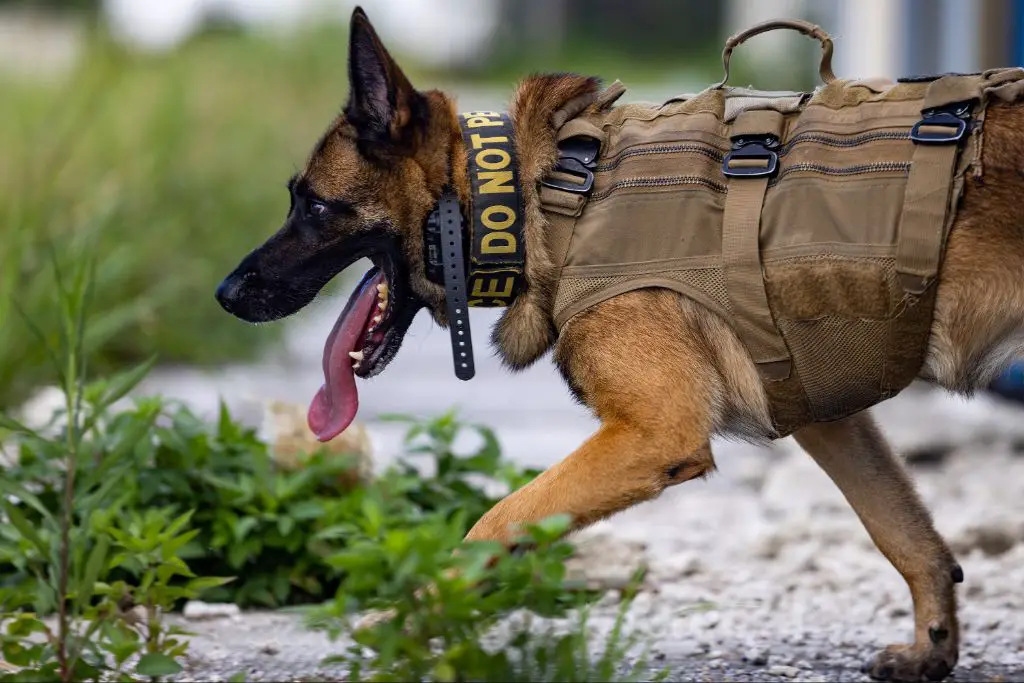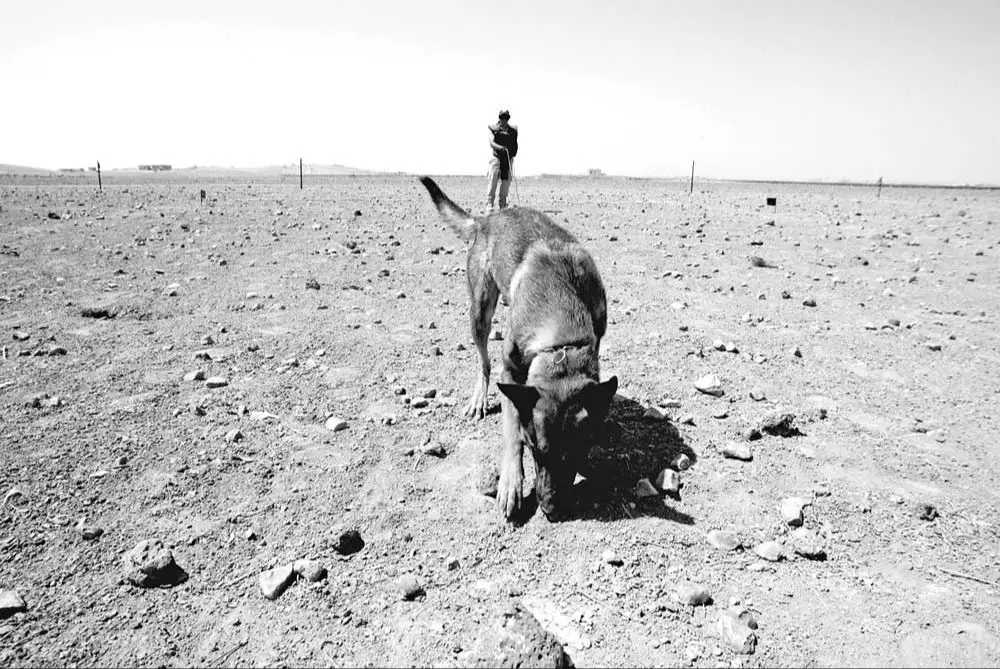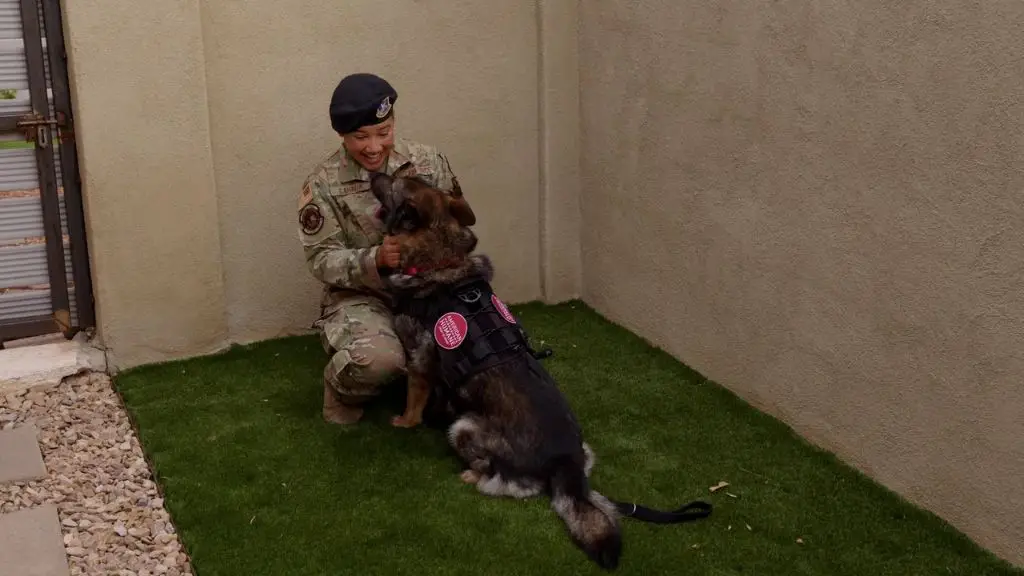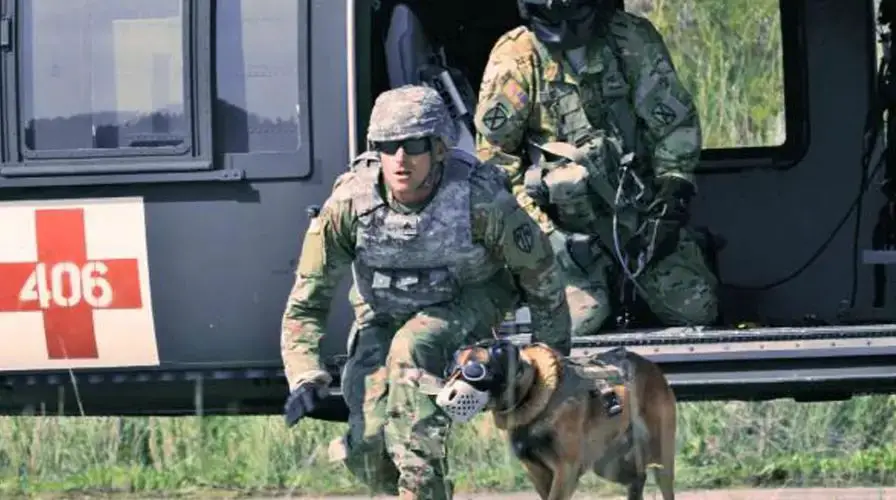Introduction
War dogs, also known as military working dogs, are canines that are trained to assist soldiers and law enforcement in various duties. Dogs have been used in warfare and for security purposes for thousands of years, dating back to ancient civilizations like Egypt, Greece, and Rome. Some of their traditional roles have included pulling chariots, carrying messages, guarding camps, detecting mines, and scouting enemy locations.
While war dogs were commonly used for centuries, their roles declined after the introduction of modern warfare technology in the 20th century. However, dogs began to be used again by military and police forces in the later 1900s once their unique abilities and superior senses were recognized. Today, war dogs continue to serve around the world, providing invaluable support to security teams.
In this article, we’ll explore if war dogs still exist and what roles they play in modern military and law enforcement operations.
Modern War Dogs
War dogs continue to serve various critical roles in military and law enforcement operations today. Some of the main ways modern dogs are utilized include:
- Explosive detection – Dogs can sniff out explosives like mines, IEDs, guns, and ammunition that would be dangerous for humans to locate.
- Patrol and guard duties – Dogs use their powerful sense of smell and hearing to patrol areas and stand guard, alerting to any potential threats.
- Search and rescue – Dogs can track scents and navigate difficult terrain to find lost or injured personnel.
- Scout missions – Dogs can silently scout ahead of troops to alert to dangers or access enemy positions.
Some of the most common breeds used are German Shepherds, Belgian Malinois, and Labrador Retrievers. These intelligent, loyal dogs have key abilities like:

- Keen sense of smell to detect even tiny traces of explosives or drugs.
- Ability to be trained to identify a wide range of scents and objects.
- Strength and speed to apprehend suspects or enemies when needed.
- Agility to traverse difficult terrain, enter small spaces, or scale obstacles.
- Focus and discipline to ignore distractions during missions.
In short, modern military dogs leverage their unique attributes to protect troops and civilians alike in the line of duty.
Training
War dogs go through extensive specialized training to prepare them for military working roles. This training generally takes place at designated dog training centers run by the military. The length of training varies based on the specific role the dog will fulfill, but often lasts from 10 weeks up to 2 years.
Some of the key skills war dogs learn during training include:
- Obedience – Dogs must be able to follow commands precisely in chaotic situations.
- Patrolling – Searching buildings and areas for threats or contraband.
- Scent detection – Identifying the smell of explosives, drugs, or humans for search and rescue.
- Attack – Apprehending threatening individuals on command.
- Tactical maneuvers – Raiding buildings, parachuting, rappelling.
- First aid – Fetching medical supplies.
This intensive training pushes dogs to their limits both mentally and physically to ensure they can handle the rigors of military duties.
Deployments
War dogs are deployed worldwide alongside military and law enforcement forces. Some of the most common deployment locations include the Middle East, Afghanistan, and Africa, though they can be sent anywhere troops are stationed. Their missions vary widely based on the needs of each operation.
Common tasks for deployed war dogs include:
- Patrolling bases and military camps
- Searching vehicles and structures for explosives
- Detecting landmines and hidden IEDs
- Tracking down and apprehending suspects
- Standing guard and providing security
- Conducting search and rescue operations

The working conditions for military dogs in the field can be extremely harsh. They work long hours in challenging environments dealing with sweltering heat, icy winters, sandstorms, and dangerous terrain. The bonds they form with their handlers help them cope with stressful and dangerous situations.
Benefits
War dogs provide unique capabilities that technology cannot replicate. Their powerful sense of smell allows them to detect hidden explosives and drugs that would go unnoticed by humans. Dogs can also track down enemies and locate IEDs, helping save countless lives.
The strong bond between handler and dog enables war dogs to traverse difficult terrain and enter dangerous areas that would be too risky for human soldiers. Their agility and speed allows them to pursue and subdue threats more safely and effectively than people.
In addition, dogs provide comfort and stress relief to deployed troops missing home. Their presence boosts morale and forges camaraderie between service members. Studies show that interacting with dogs lowers anxiety, blood pressure, and cortisol levels.
Military working dogs are an invaluable asset on the battlefield. Their keen senses and abilities save lives daily by identifying hidden dangers and taking down enemies. The unique capabilities of dogs also provide comfort and support for deployed troops.
Challenges
War dogs face many dangers and challenges during deployment and after. On the battlefield, they risk injury from explosives, gunfire, and other hazards. The mental stress of working in a warzone also takes a toll. Dogs can suffer from PTSD and other psychological issues.
After deployment, war dogs often have trouble adjusting to civilian life. Retired military dogs may become anxious, aggressive, or distressed when not working. The emotional trauma of combat can cause lasting damage. Providing proper care and treatment for these dogs is crucial but not always available.
War dogs form close bonds with their handlers. But they are considered equipment by the military and often do not receive the same recognition and benefits as human veterans. Finding a proper home for retired dogs poses additional challenges. Despite the risks and difficulties, many dogs continue to bravely serve in conflicts around the world.

Adoption
After retiring from military service, war dogs are often adopted by their former handlers or other qualified individuals. The adoption process involves submitting an application and undergoing a screening and home inspection to ensure the dog will transition well to civilian life.
Adjusting to life after deployment can be challenging for war dogs. They were trained for specific tasks and missions and developed strong bonds with their military handlers. Adoptive owners must be prepared to give them time, patience and training as they acclimate to a new home and family.
On the positive side, most retired military dogs thrive in an environment of love, leisure and stability after their working years. Their new families give them a chance to just be a dog and enjoy life’s simple pleasures – a soft bed, regular meals, toys to play with and space to relax and unwind from their previous duties.
Notable Dogs
Throughout history, there have been many notable and famous war dogs who have shown tremendous bravery and service. Here are some of the most well-known:
Sergeant Stubby was a dog who served with the 102nd Infantry Regiment during World War I. He warned soldiers of gas attacks, found wounded men in need of help, and even caught a German spy! He became the first dog ever to be given rank in the US Army.
Chips was a Collie-German Shepherd mix who served as a sentry dog with the 3rd Infantry Division in World War II. He helped capture Italian soldiers and once broke away from his handler to attack an enemy machine gun nest.
Cairo was a Belgian Malinois who served with the US Navy SEALs on the mission to take down Osama bin Laden in 2011. He was trained to sniff out bombs, weapons, and enemies.
In modern times, many military dogs have received awards and honors for their service. Some examples are Lucca, a Marine Corps dog who lost her leg finding IEDs in Afghanistan but kept working. And Conan, a Delta Force dog who was injured while chasing down Abu Bakr al-Baghdadi.
The Future
War dogs will likely continue to play an important role in military operations in the future. As technology advances, new ways of utilizing dogs’ unique abilities will emerge.
Some possible future roles for war dogs include:
-
Bomb detection – With their excellent sense of smell, dogs can be used to sniff out explosives. Advanced chemical sensors could augment dogs’ natural abilities.
-
Unmanned teaming – Dogs may be paired with unmanned ground vehicles to search buildings or examine suspicious objects.
-
Cyber security – Dogs could be trained to detect cyber network intrusions by recognizing scents associated with hacking activity.
-
Emerging threats – Dogs can assist in identifying new chemical and biological hazards on the battlefield.
Advanced virtual reality systems may enable remote handling of military dogs, allowing them to be deployed into dangerous environments from a safe distance.

Robotics and sensor technology will likely continue to enhance dogs’ capabilities. But the powerful bond between handler and dog will remain critical to operational success.
Conclusion
In summary, war dogs have played an important role in military operations for centuries. Today, military working dogs continue to serve critical functions for armed forces around the world. Their keen senses, loyal companionship, and ability to detect explosives and other threats make them invaluable assets on the battlefield and at home.
While the future is uncertain, it seems likely that military working dogs will continue to serve alongside soldiers, sailors, airmen and marines for years to come. Advanced technology and robots may complement canine abilities, but are unlikely to fully replace dogs’ natural talents and the strong bonds they form with their handlers.
We owe tremendous gratitude to the loyal military working dogs that risk their lives to protect ours. Their service and sacrifice is an inspiring example of the incredible things dogs are capable of when we recognize their abilities and form trusting partnerships with them.